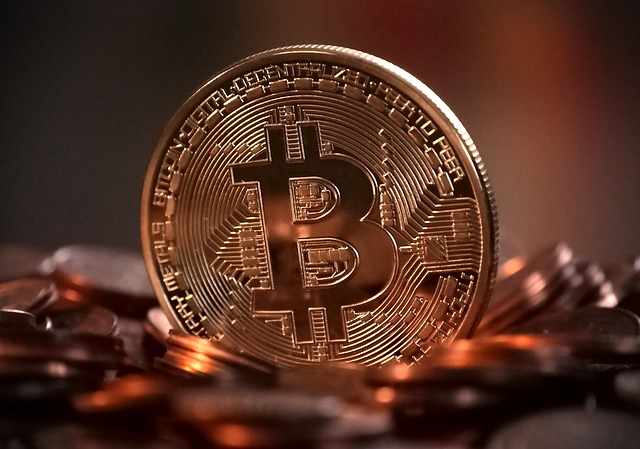Crypto’s growing footprint: UK regulator sounds alarm over stablecoin risks
United Kingdom regulators are increasingly concerned about the impact of stablecoins and the broader crypto industry on the country’s financial system and monetary stability.During Financial Policy Committee meetings held on April 4 and 8, regulators noted that while the current “interconnectedness of unbacked crypto asset markets with the real economy and financial sector is growing but remains relatively limited,” stablecoins and crypto markets have expanded significantly in the past year, drawing heightened regulatory attention.The UK, its central bank and its local regulator, the Financial Conduct Authority, have been developing frameworks for stablecoins to ensure financial resilience. The committee claims to have determined the factors that make a stablecoin resilient:“A key determinant of the resilience of stablecoins was the liquidity, credit and market risks of their backing assets, which were in place to ensure that redemptions can be met in a timely manner at par, even in periods of stress.“The committee raised alarm over the “greater issuance of sterling offshore stablecoins with inappropriate backing assets.” This has implications for UK financial markets and “even with appropriate regulation, greater use of stablecoins denominated in foreign currencies could make some economies vulnerable to currency substitution,” the committee said.Bank of England. Source: WikimediaRelated: Builders beware — The UK’s 2026 crypto regime is comingCurrency substitution risks spark concernCommittee members are worried that if stablecoin use were to move beyond crypto settlements, it could result in “implications for retail and wholesale cross-border payments.” In retail flows, stablecoin use by households and small and medium-sized enterprises could, for cross-border payments, “result in currency substitution,” increasing counterparty risk.The statement followed reports about growing stablecoin adoption not limited to crypto remittances in emerging markets, especially in Africa. A recent report from Chainalysis found that stablecoins now make up nearly half of all transaction volume in Sub-Saharan Africa.Similarly, a late 2024 report suggested that a number of emerging economies across Africa have the potential to become digital asset hubs. Ben Caselin, chief marketing officer of Johannesburg-based crypto exchange VALR, told Cointelegraph at the time:“South Africa is the entryway to the rest of Africa with a good rule of law and independent judiciary. It’s easy to open a company in South Africa.”Still, reports of similar trends in developed economies with easily accessible financial infrastructure are scarce. Experts often point to the unavailability of banking services and unstable local fiat currencies as the reason why developing countries — from Africa in particular — are eager to adopt dollar-based stablecoins and crypto.Related: 3 reasons why stablecoin growth thrives globally — Will US follow under Trump?UK is not alone in worryingThe United Kingdom is in good company in worrying about the impact of stablecoins and the broader crypto industry on monetary stability. The European Securities and Markets Authority (ESMA) recently warned that crypto will increasingly threaten traditional financial markets’ stability as the industry grows and becomes more entwined with conventional finance players. ESMA’s executive director, Natasha Cazenave said:“We cannot rule out that future sharp drops in crypto prices could have knock-on effects on our financial system.”Local regulators are already acting on those concerns. In late March, the European Union’s insurance authority proposed a blanket rule that would mandate insurance firms to maintain capital equal to the value of their crypto holdings as part of a measure to mitigate risks for policyholders.Magazine: Ridiculous ‘Chinese Mint’ crypto scam, Japan dives into stablecoins: Asia Express
Bybit recovers market share to 7% after $1.4B hack
Bybit’s market share has rebounded to pre-hack levels following a $1.4 billion exploit in February, as the crypto exchange implements tighter security and improves liquidity options for retail traders.The crypto industry was rocked by its largest hack in history on Feb. 21 when Bybit lost over $1.4 billion in liquid-staked Ether (stETH), Mantle Staked ETH (mETH) and other digital assets.Despite the scale of the exploit, Bybit has steadily regained market share, according to an April 9 report by crypto analytics firm Block Scholes.“Since this initial decline, Bybit has steadily regained market share as it works to repair sentiment and as volumes return to the exchange,” the report stated.Block Scholes said Bybit’s proportional share rose from a post-hack low of 4% to about 7%, reflecting a strong and stable recovery in spot market activity and trading volumes.Bybit’s spot volume market share as a proportion of the market share of the top 20 CEXs. Source: Block ScholesThe hack occurred amid a “broader trend of macro de-risking that began prior to the event,” which signals that Bybit’s initial decline in trading volume was not solely due to the exploit.Related: Can Ether recover above $3K after Bybit’s massive $1.4B hack?It took the Bybit hackers 10 days to launder all the stolen Bybit funds through the decentralized crosschain protocol THORChain, Cointelegraph reported on March 4.Source: Ben ZhouDespite efforts, 89% of the stolen $1.4 billion was traceable by blockchain analytics experts.Related: THORChain generates $5M in fees, $5.4B in volume since Bybit hackLazarus Group’s 2024 pause was repositioning for Bybit hackBlockchain security firms, including Arkham Intelligence, have identified North Korea’s Lazarus Group as the likely culprit behind the Bybit exploit, as the attackers have continued swapping the funds in an effort to render them untraceable.Illicit activity tied to North Korean cyber actors declined after July 1, 2024, despite a surge in attacks earlier that year, according to blockchain analytics firm Chainalysis.The slowdown in crypto hacks by North Korean agents had raised significant red flags, according to Eric Jardine, Chainalysis cybercrimes research Lead.North Korean hacking activity before and after July 1. Source: ChainalysisNorth Korea’s slowdown “started when Russia and DPRK [North Korea] met for their summit that led to a reallocation of North Korean resources, including military personnel to the war in Ukraine,” Jardine told Cointelegraph during the Chainreaction show on March 26, adding:“So, we speculated in the report that there might have been additional things unseen in terms of resources reallocation from the DPRK, and then you roll forward into early February, and you have the Bybit hack.”https://t.co/jOlqMt4Hag— Cointelegraph (@Cointelegraph) March 26, 2025The Bybit attack highlights that even centralized exchanges with strong security measures remain vulnerable to sophisticated cyberattacks, analysts said.The attack shares similarities with the $230 million WazirX hack and the $58 million Radiant Capital hack, according to Meir Dolev, co-founder and chief technical officer at Cyvers.Magazine: Trump’s crypto ventures raise conflict of interest, insider trading questions
US Senate confirms Paul Atkins to lead SEC under Trump
The US Senate has confirmed US President Donald Trump pick Paul Atkins as chair of the Securities and Exchange Commission in a 51-45 vote, with lawmakers largely voting along party lines.His appointment comes several months after Trump named Atkins to lead the commission late last year.Atkins previously served as an SEC commissioner between 2002 and 2008.He will take over from Mark Uyeda, who has served as the SEC’s acting chair since Jan. 20.”We welcome Paul Atkins as the next Chairman of the SEC. A veteran of our Commission, we look forward to him joining with us, along with our dedicated staff, to fulfill our mission on behalf of the investing public,” Uyeda and Commissioners Hester Peirce and Caroline Crenshaw wrote in an April 9 statement.This is a developing story, and further information will be added as it becomes available.
AAVE soars 13% as buyback proposal passes among tokenholders
Aave’s tokenholders approved a governance proposal to start buying back the decentralized finance (DeFi) protocol’s governance token, AAVE, as part of a broader tokenomics overhaul, Aave said on April 9. The proposal — which was approved by more than 99% of AAVE tokenholders — permits the protocol to purchase $4 million in AAVE (AAVE) tokens, enough for one month of buybacks. The move is a “first step” toward a broader plan to repurchase $1 million AAVE tokens weekly for six months. It is also the latest instance of DeFi protocols implementing buyback mechanisms in response to tokenholder demands.“The goal is to sustainably increase AAVE acquisition from the open market and distribute it to the Ecosystem Reserve,” the proposal said. The AAVE token’s price rallied more than 13% on April 9, bringing the protocol’s market capitalization to more than $2.1 billion, according to data from CoinGecko.The buyback proposal passed with overwhelming support. Source: AaveRelated: Aave proposal to peg Ethena’s USDe to USDT sparks community pushbackBuybacks gain popularityIn March, the Aave Chan Initiative (ACI), a governance advisory group, proposed a tokenomics revamp that would include new revenue allocations for AAVE tokenholders, enhanced safety features for users, and the creation of an “Aave Finance Committee.”Aave is Web3’s most popular DeFi protocol, with total value locked surpassing $17.5 billion as of April 9, according to DefiLlama. It is also among DeFi’s biggest fee generators, with an estimated annualized fee income of $350 million, the data shows. Aave is DeFi’s most popular protocol by TVL. Source: DeFILlamaDeFi protocols are under increasing pressure to provide tokenholders with a share of protocol revenues — partly because US President Donald Trump has fostered a friendlier regulatory environment for DeFi protocols in the United States.Projects including Ethena, Ether.fi and Maple are piloting value-accrual mechanisms for their native tokens.In January, Maple Finance’s community floated buying back native SYRUP tokens and distributing them as rewards to stakers.In December, Ether.fi, a liquid restaking token issuer, tipped plans to direct 5% of protocol revenues toward buying back native ETHFI tokens. Similarly, Ethena, a yield-bearing stablecoin issuer, agreed to share some of its approximately $200 million in protocol revenues with tokenholders in November.Magazine: DeFi will rise again after memecoins die down: Sasha Ivanov, X Hall of Flame
US President Donald Trump issues 90-day pause on reciprocal tariffs
United States President Donald Trump has issued a 90-day pause for “reciprocal tariffs,” and lowered the tariff rate to 10% on countries that do not retaliate with counter-tariffs.However, the President also said he would increase the reciprocal tariff rate on China to 125% due to the country’s counter-tariffs against the US. Trump wrote in an April 9 Truth Social post:”At some point, hopefully, in the near future, China will realize that the days of ripping off the USA and other countries is no longer sustainable or acceptable.”According to data from TradingView, the S&P 500 index rallied by close to 7% and the Nasdaq is up roughly 8% following the announcement, showcasing the high volatility of capital markets amid the macroeconomic uncertainty and the potential for a protracted trade conflict.Source: Donald J. TrumpRelated: Bitcoin has ‘fully decoupled’ despite tariff turmoil, says Adam BackThis is a developing story, and further information will be added as it becomes available.
Binance to launch second reward-bearing margin asset LDUSDt
Binance is launching a new “reward-bearing margin asset” LDUSDt, which the company says is not a stablecoin.According to an April 9 announcement, LDUSDt can be obtained by swapping Tether’s USDt deposited in the firm’s Simple Earn yield product. Binance stated that holders of LDUSDt will continue to earn yield rewards through Simple Earn, even while using the token for margin trading.This marks the second time Binance has launched a reward-bearing margin asset. Binance launched its first reward-bearing margin asset, BFUSD, in 2024. At the time of the launch, Binance had stepped in to clarify that “it is not a stablecoin” in response to user concerns and comparisons to the failed TerraUSD (UST) token. In its latest announcement, Binance preemptively reiterated that LDUSDt is not a stablecoin:“LDUSDT is not a stablecoin but a crypto asset that can be used as Futures trading margin, while allowing users to earn Simple Earn Real-Time APR rewards.“Related: Binance to purge 14 tokens following ‘vote to delist’ processA deeply integrated tokenAccording to Binance, LDUSDt can be used as a margin asset in multi-asset mode on the exchange’s futures platform. It also accrues real-time annual percentage yield rewards.The exact launch time is yet to be determined, with the announcement noting that it “will be available on the Binance website and app soon.” A Binance spokesperson told Cointelegraph:“[LDUSDt] gives users’ USDT more utility by converting it into a tradable asset for Futures, without losing access to their ongoing rewards. When users swap their subscribed USDT for LDUSDT, the funds are automatically moved into their Futures Wallet, where they can be used as margin in Multi-Asset Mode.“Binance had not responded to Cointelegraph’s questions regarding potential risk implications associated with this system by the time of publication.Related: Nigerian court postpones Binance tax evasion case to end of April: ReportBinance continues to dominate crypto marketsBinance remains the world’s largest cryptocurrency exchange by trading volume. According to CoinGecko, the platform processed more than $16.5 billion in trades over a 24-hour period. Bitget followed with just under $5 billion in volume.Data provided by the more popular but Binance-owned CoinMarketCap shows that $24.6 billion worth of trades took place on the exchange over the last 24 hours. The platform shows only $3.84 billion worth of trades on Bitget in the previous 24 hours.Despite ongoing legal and regulatory challenges in multiple jurisdictions, Binance continues to grow its global influence. According to recent reports, the firm’s former CEO, Changpeng “CZ” Zhao, will begin advising the Kyrgyz Republic on blockchain and crypto-related regulation and tech after signing a memorandum of understanding with the country’s foreign investment agency.Meanwhile, current CEO Richard Teng remains in the spotlight. In late March, Teng denied reports that Binance.US was in deal talks with entities affiliated with US President Donald Trump during a March 18 panel at Blockworks’ 2025 Digital Asset Summit in New York.Magazine: Trump’s crypto ventures raise conflict of interest, insider trading questions
Bitcoin price could rally even as global trade war rages on — Here is why
Crypto and equities traders were hopeful for a last-minute solution that would prevent the US from enacting 104% tariffs on Chinese goods entering the United States, but in a press conference, the White House confirmed that the tariffs would start on April 9. Markets deteriorated when Peter Navarro, trade adviser to US President Donald Trump, stated that tariffs were “not a negotiation.”As a result, the S&P 500 index closed on April 8 with a 1.6% loss, reversing earlier gains of 4%. This downturn has left traders wondering whether Bitcoin (BTC) can regain its bullish momentum amid worsening macroeconomic conditions.Spiraling US debt issues remain, paving the way for Bitcoin gainsBetween April 2 and April 7, the S&P 500 index dropped by 14.7%, causing panic among Bitcoin holders and forcing a retest of the $75,000 level—the lowest in more than five months.S&P 500 futures (left) vs. Bitcoin/USD (right). Source: TradingView / CointelegraphDuring an appearance with Israeli Prime Minister Benjamin Netanyahu on April 7, President Trump reportedly said his goal was to “reset the table” on trade. He added that “there can be permanent tariffs, and there could also be negotiations because there are things that we need beyond tariffs.” Amid this uncertainty, IPOs and mergers have been delayed, while leveraged loan deals and bond sales were sidelined, according to Yahoo Finance.It becomes clear that the stock market is likely to rally if trade war risks subside. Economists have cautioned that tariffs could trigger inflation and significantly raise the chances of an economic recession, according to Reuters. However, assessing the impact on Bitcoin’s price remains a challenging task. This is because some investors see the cryptocurrency’s fixed monetary system as a safeguard against the continuous expansion of global fiat currency supplies.Short-term correlations hurt BTC, but possible interest rate cuts could turn the tideIn the short term, the positive correlation between Bitcoin and the stock market is expected to persist. Nonetheless, the US government’s fiscal challenges present a potential opportunity for Bitcoin’s price to grow. On April 8, the US 10-year Treasury yield rose to 4.28%, following a brief dip to 3.90% on April 7. This increase suggests that investors are demanding higher returns to hold these assets.US Dollar Index (DXY, left) vs. US 10-year Treasury yield (right). Source: TradingView / CointelegraphThe rising cost of rolling over the $9 trillion in federal government debt set to mature within the next 12 months is expected to increase fiscal imbalance and weaken the US dollar. The US Dollar Index (DXY) has diverged from US Treasury yields, falling to 103.0 on April 8 from 104.2 on March 31. This situation could potentially support Bitcoin’s price—a sentiment shared by BlackRock CEO Larry Fink in his March 31 letter to investors.Related: Weaker yuan is ‘bullish for BTC’ as Chinese capital flocks to crypto — Bybit CEOMichael Gapen, Morgan Stanley’s chief US economist, stated in a client note on April 8: “We think the right answer is for the Fed to wait in its current stance for longer,” as reported by CNBC. According to Morgan Stanley’s updated forecast, the US Federal Reserve is expected to maintain interest rates at 4.25%-4.50% until March 2026, adding that “only a recession would change the calculus” and “a recession could mean earlier and larger up-front cuts.”Bitcoin’s momentum is likely to turn positive as traders realize that the US Federal Reserve has limited tools to avoid a recession without risking inflation. While predicting the exact timing of a breakout remains uncertain, prolonged delays in resolving trade war issues could drive investors toward scarce assets like Bitcoin, especially amid fears of potential US dollar devaluation.This article is for general information purposes and is not intended to be and should not be taken as legal or investment advice. The views, thoughts, and opinions expressed here are the author’s alone and do not necessarily reflect or represent the views and opinions of Cointelegraph.
Scaling the EVM requires an L1, not an L2
Opinion by: Jay Jog, co-founder of Sei Labs When CryptoKitties crashed the Ethereum network in 2017, the industry learned a hard lesson about blockchain scalability. Today, with over $100 billion locked in decentralized finance (DeFi) and millions of non-fungible tokens (NFTs) being traded, that lesson is more relevant than ever. The Ethereum Virtual Machine (EVM) — the engine that powers this activity — is reaching its limits.So far, the crypto community’s answer has been layer 2 solutions — separate chains that process transactions and report back to Ethereum. But what if the community’s been looking for answers in the wrong place?Layer 2s are not the solutionLayer 2 blockchains have long been touted as the solution to the EVM’s performance challenges, given their ability to offload the computational work from Ethereum to a secondary chain. Layer-2 solutions have proven to be nothing more than a “quick fix” instead of a permanent solution, as many hoped for. As Gemini reported, a new layer 2 appeared every 19 days in 2024, indicating that the competitive landscape is creating more problems instead of solving them.Layer 2 solutions come with their own challenges, primarily tied to centralization and interoperability. Many of today’s layer 2 blockchains run with centralized sequencers that could expose the network to transaction censorship, transaction reordering and more. Additionally, Vitalik Buterin stated in a recent blog post that layer 2s are struggling to maintain interoperability. This called attention to the disorganized state of layer 2s, further contributing to liquidity fragmentation and a complex user experience. Recent: L2 gaming activity spikes in February, but wallets decline — ReportAdvanced rollup designs have tried to fix these pain points. Recently, there has been a new design called native rollups that is trying to tackle layer 2’s centralization issues. Native rollups take value away from projects, which will significantly deter adoption. Consequently, it is doubtful that native rollups are the answer to all of Ethereum’s urgent problems. With just as many challenges as the EVM itself, why rely on layer 2s instead of looking elsewhere? Could there be a better solution? According to L2BEAT, it costs around $95.53 million annually to run all the major L2s. Instead of spending more money on building and running more L2s and interoperability solutions, why not focus on refining the existing foundational layer? A more accurate alternative to TPSTo create the most performant layer 1s, the industry must first reevaluate the approach to track blockchain performance. Most blockchains focus on throughput, using transactions per second (TPS) to compare chain performance. While many argue that reaching the most significant transactions per second is the way to enable mainstream adoption for crypto, TPS unfortunately doesn’t allow for apples-to-apples comparisons since different types of transactions require different amounts of compute. For example, an Ether (ETH) transfer requires 21,000 units of gas, whereas an ERC-20 transfer needs 65,000, confirming that TPS conveys zero value when tracking mass transactions and network throughput.A new standardized performance metric that better reflects network computing capability must be developed to understand a blockchain’s full potential. This is where an alternative performance metric called “gas per second” emerges — a measure that evaluates the gas fees required to process transactions, better reflecting different transaction types. While TPS is best served to assess simple ETH transfers, gas per second shows the bigger picture by considering all computational efforts, even for complex transactions. Given the novelty of this metric, measuring gas per second across all chains will be a long process but a crucial step in blockchain’s evolution. Going back to the basics: Layer 1sThe capability of layer 1s has historically been overlooked, as many Ethereum researchers focused on a rollup-centric roadmap. As the backbone of the entire crypto ecosystem, layer 1s are the key to scaling the EVM. To solve EVM’s scalability challenge, layer 1s must start rebuilding the EVM from scratch with performance in mind above anything else. The EVM faces severe network congestion and high gas prices as volume increases. It’s time for layer 1s to scale to onboard the next generation of users. Approaches such as parallelization will help improve throughput and, combined with transforming the EVM’s consensus mechanism and storage solutions, will set a new performance standard for the industry and establish a more developer-friendly environment for projects.The proper solution to scaling the EVM For the past few years, Layer 2s have been presented as the answer to providing the cheapest and fastest way to execute transactions. Layer 2s are not what the EVM truly needs. From day one, Layer 1s have always been the true solution to the EVM’s scalability problem. It is time to be open to adopting more accurate performance metrics and divert attention to improving network performance. These changes will pave the way for the EVM to achieve its highest potential, introducing levels of scalability and efficiency never seen before. The EVM is here to stay, but its future depends on the industry to build. Opinion by: Jay Jog, co-founder of Sei Labs.This article is for general information purposes and is not intended to be and should not be taken as legal or investment advice. The views, thoughts, and opinions expressed here are the author’s alone and do not necessarily reflect or represent the views and opinions of Cointelegraph.
$2T fake tariff news pump shows ‘market is ready to ape’
Recent fake news that US President Donald Trump was considering a 90-day pause in tariffs shows the potential for a strong market rebound should a real one take place, according to observers. A fake news post on X on April 7 from the verified “Walter Bloomberg” account claimed that the White House was considering a 90-day pause on tariffs following an interview with Kevin Hassett, one of Donald Trump’s economic advisers. “Hassett: Trump is considering a 90-day pause in tariffs for all countries except China,” read the now-deleted post from the user, who is not affiliated with Bloomberg News. The account, which has a verified badge and 852,000 followers, caused quite a stir after the rumor was mistakenly aired as a banner on CNBC and then amplified by Reuters.The S&P 500 spiked more than 8% from its low on the day in reaction, the Nasdaq added 9.5% in less than an hour and the Dow Jones pumped 7%, adding trillions to stock markets. Bitcoin (BTC) prices saw a similar spike, with the asset pumping 6.5% to top $80,000 briefly before falling back again. The official White House “Rapid Response” account quickly posted on X that this was fake news, and markets began to dump again. “Market ready to ape” at a moment’s noticeWhile the rumor was debunked as fake, crypto YouTuber Lark Davis said that the episode revealed some critical things about the market. The market is ready to accept prolonged China negotiations as long as most deals can be resolved, he said before adding the “market is ready to ape, even a lame 90-day delay sent markets soaring.” “Now imagine what happens when dozens of deals are made with top players ie, India, Canada, and the UK. Shit tons of money is on the sidelines, ready to ape in at a moment’s notice.”“That fake headline might actually give Trump, Navarro, and Lutnick more confidence to keep pushing this further,” commented X user Geiger Capital, who added, “They now know that at any point they can announce a pause and the market will rally ~10% in a single day.”What really happened in Hasset interviewFox News asked Hasset whether Trump would consider a 90-day pause in tariffs and was given a non-committal response. “I think the president is gonna decide what the president is gonna decide,” he said, adding: “Even if you think there will be some negative effect from the trade side, that’s still a small share of GDP.” Related: Billionaire investor would ‘not be surprised’ if Trump postpones tariffs“The idea that it’s going to be a nuclear winter or something like that is completely irresponsible rhetoric,” he said. KILMEADE: Would Trump consider a 90 days pause in tariffs?HASSETT: I think the president is gonna decide what the president is gonna decide … even if you think there will be some negative effect from the trade side, that’s still a small share of GDP pic.twitter.com/3KymvgOwQG— Aaron Rupar (@atrupar) April 7, 2025Shortly after the 90-day tariff pause post was deleted, Trump took to his own social media platform, Truth Social, to threaten China with even more tariffs. “If China does not withdraw its 34% increase above their already long-term trading abuses by tomorrow, April 8th, the United States will impose additional tariffs on China of 50%, effective April 9th,” he said. Magazine: Financial nihilism in crypto is over — It’s time to dream big again
Memecoin platform Pump.fun brings livestream feature back to 5% of users
Alon Cohen, co-founder of the Solana-based memecoin launchpad Pump.fun, is set to bring back live streaming on the platform — five months after suspending the feature after several incidents involving harmful content. Posting on X on April 4, Cohen said the feature has returned with “industry standard moderation systems in place and transparent guidelines.” He said it had been rolled out to just 5% of users. Source: Alon CohenPump.fun’s website describes the purpose of its new live-streaming moderation policy as being “to cultivate a social environment on pump fun that preserves creativity and freedom of expression and encourages meaningful engagement amongst users, free of illegal, harmful, and negative interactions.”Breaches of the moderation policy could see creators having their livestreams and Pump.fun accounts terminated. The policy prohibits certain types of content, including violence, animal abuse, pornography and youth endangerment. However, it also creates ambiguity by claiming that “pump fun does not intend to universally define what content is ‘appropriate’ or ‘inappropriate.’” “There is an implicit assumption that some content — perhaps much content — generally defined as NSFW will in fact appear on pump fun,” Pump.fun’s moderation policy states. The platform added it reserves the right to “unilaterally determine the appropriateness of content where necessary and to moderate it accordingly.”Live-streaming return comes as memecoin market crumblesPump.fun removed its live-streaming feature last November after it became awash with extreme content as memecoin creators turned to increasingly shocking tactics to promote their tokens. Some users were allegedly threatening violence or self-harm if a token didn’t reach a price goal. The platform said its unprecedented growth had put a strain on its moderators, and that it would pause the live-streaming functionality indefinitely to ensure the safety of its users “until the moderation infrastructure is ready to deal with the heightened levels of activity.”At the time, Mikko Ohtamaa, co-founder of algorithmic trading firm Trading Strategy, said that if Pump.fun continued to allow live-streaming without appropriate moderation, it would quickly be shut down once a mainstream audience became aware of what was going on.“I advocate for freedom of speech, but these streams are causing practical issues where people are breaking the law in live broadcasts. This will trigger a shutdown when the mainstream media catches a wind on this,” Ohtamaa said.Pump.fun’s decision to reintroduce its live-streaming feature comes as interest in memecoins has been down significantly following a series of high-profile rug pulls such as Libra (LIBRA) and Melania Meme (MELANIA). That’s coupled with the poor price performance of tokens like Trump (TRUMP) — which, according to CoinGecko, is now down over 90% from its January highs.Related: Libra founder: Memecoin critics only ‘bitch’ when left out of insider dealsData from Dune Analytics showed in March that the graduation rate for tokens launched on Pump.fun — that is, the percentage of tokens that achieve a large enough market cap to become tradable on a regular decentralized exchange — had fallen to under 1%, down from highs of around 1.67%. Combined with a sharp drop in the number of tokens being launched on the platform, this has seen the total number of tokens graduating from highs of around 5,400 per week in January to under 1,500 in March.The number of tokens launched on the Solana network has also fallen dramatically overall. Only 31,651 launched on April 5, according to Solscan, less than one-third of the 95,578 created at the peak of the memecoin frenzy on Jan. 26.Magazine: New ‘MemeStrategy’ Bitcoin firm by 9GAG










